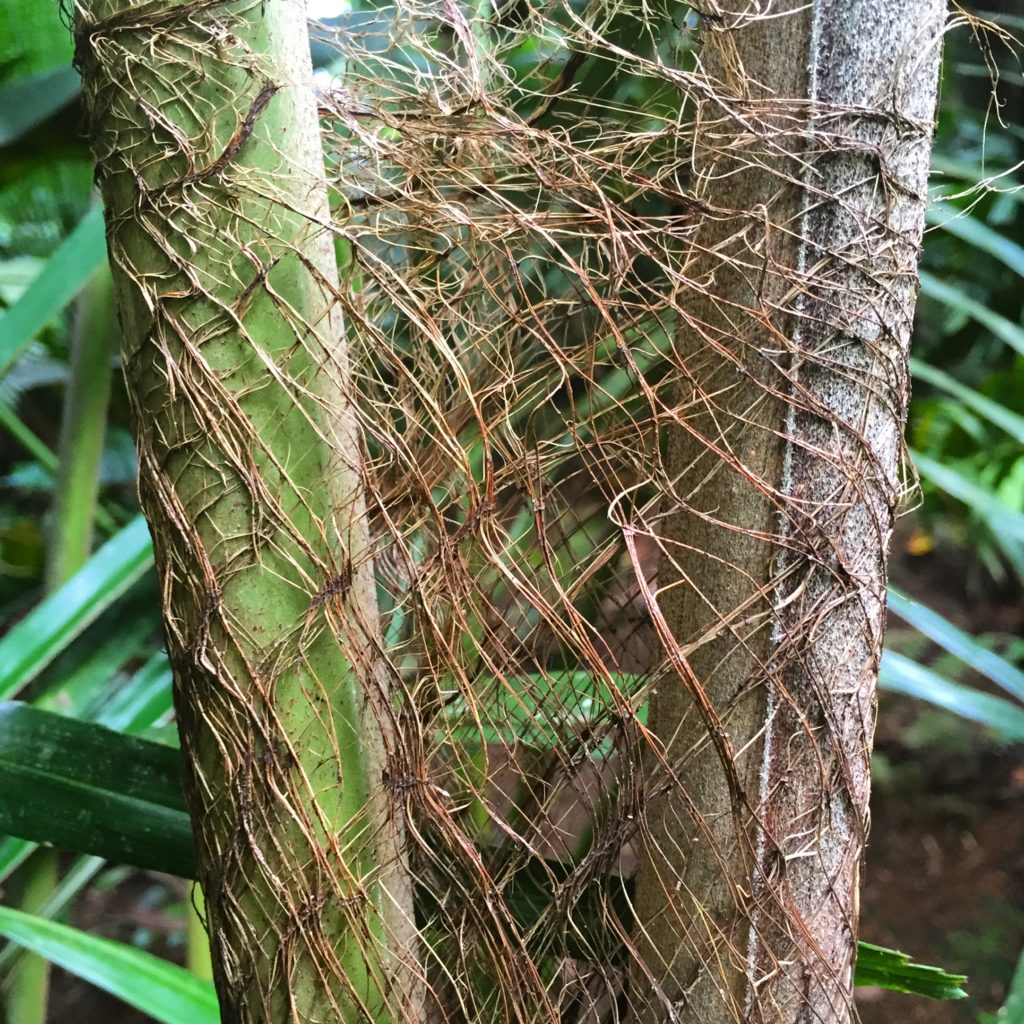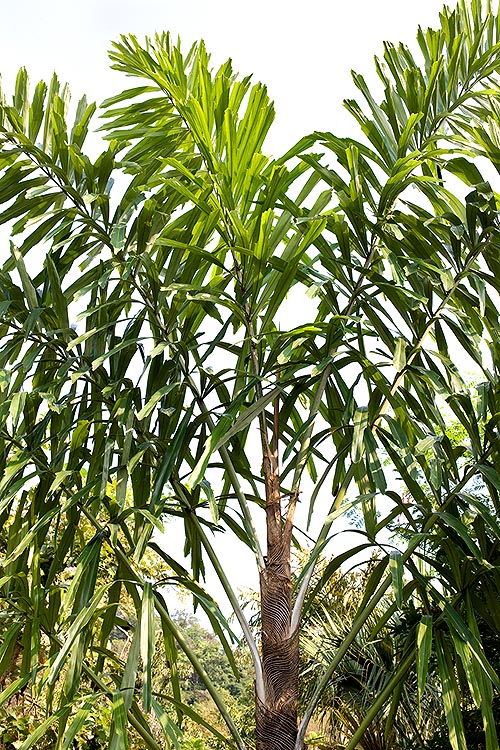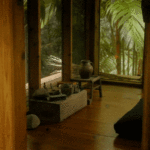
Wallichia disticha is a fascinating and unique palm species native to the tropical lands a the base of the Himalayas (Myanmar, Thailand, Bangladesh, Bhutan, China (Yunnan), India (Arunachal Pradesh, Assam, Meghalaya, Sikkim, West Bengal), Laos (Bolikhamsay), Myanmar (Bago, Chin, Kachin, Kayin, Rakhine), Thailand (Northern, West), and probably Nepal. This species is found in lowland and montane rain forests, especially in rocky places and on steep slopes up to 2,500 feet in elevation.

The palm has a very unusual looking appearance. It is “distichous”, meaning the leaves come out in two ranks only, with leaves forming just two rows on either side of the trunk. The trunk is covered in a criss-crossed fibre mat (as seen in photo above). It can grow up to 30 feet tall in its native habitat,and is a short-lived tree, living approximately 15 years.
The Wallichia disticha is monocarpic, which means it will only fruit once, and will die after flowering. This species will flower after about 15 years of frond growth, and will flower for about two years before it dies.
The genus Wallichia is honoured to the Danish botanist Nathaniel Wallich (1786-1854), and the name of the species disticha comes from the Greek “distichos” (from “dis” = two and “stichos” = line) = distichos, with reference to the leaves disposed in two rows on opposite sides of the stem.
It has many common names tied to each of the countries where the tree is found: thakal (Bhutan); katong (Indian); tao pha (Laotian); minbaw, trung, zanong (Burmese); mak na re suan (Thai); distichous fishtail palm, false sugar palm, Wallich palm (English).
There are five of this palm species thriving in the Merwin Palm Collection.
Want to “virtually explore” the Merwin Palm Collection? Search through our archive of Palm Facts of the Week, featuring palms hand-planted by W.S Merwin. To search through the Online Merwin Palm Database, visit this link.
If you’re inspired to help The Merwin Conservancy preserve and care for the world-renowned Merwin Palm Collection into the future, please consider making a tax-deductible donation.
Photo by Dr. Giuseppe Mazza is from his website Photomazza, and can be found here, along with more photos of this species.

